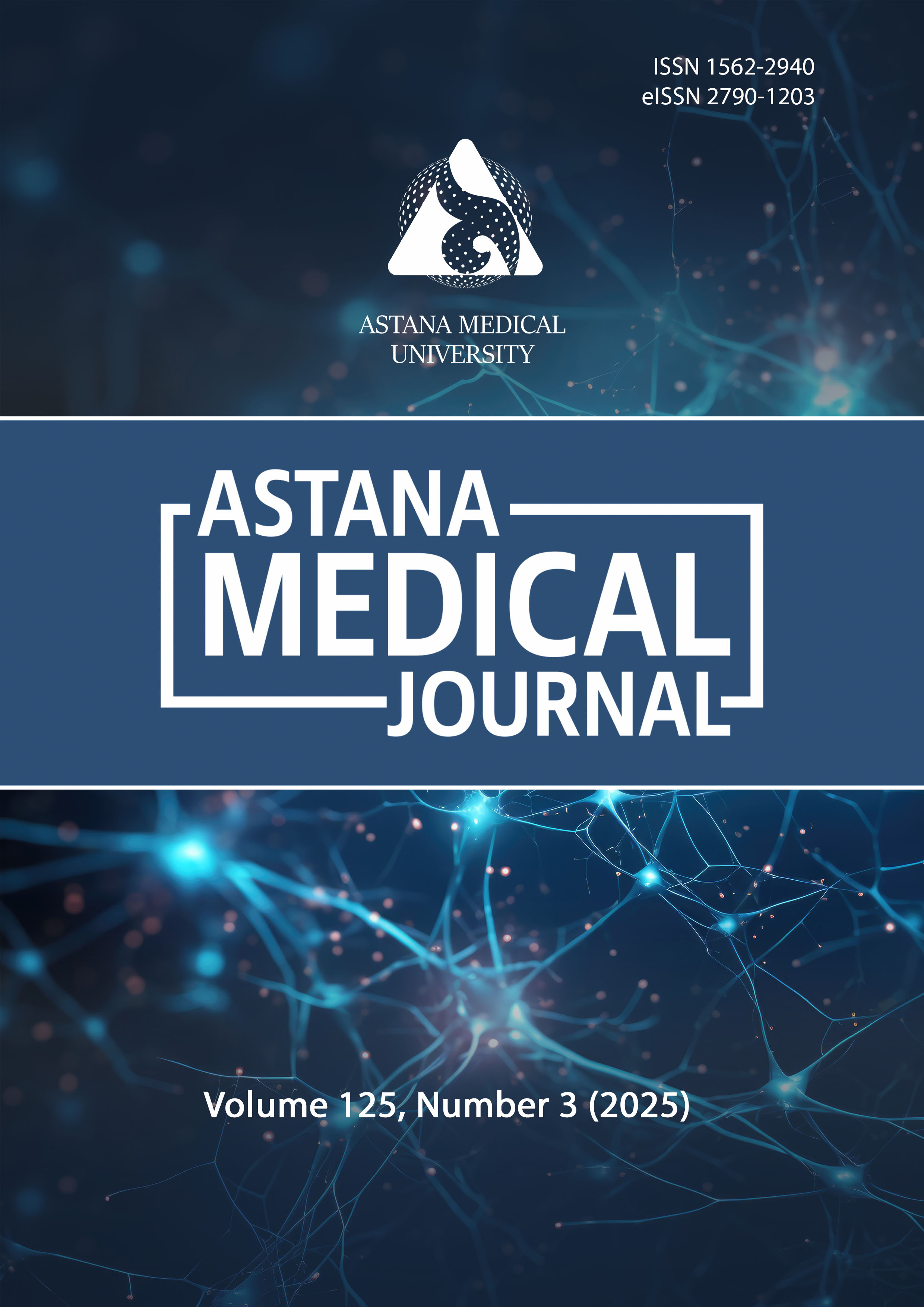Современные технологии дезинфекции: Инновации, эффективность и перспективы на будущее
DOI:
https://doi.org/10.54500/2790-1203-2025-3-125-amj002Ключевые слова:
современные технологии дезинфекции, ультрафиолетовая дезинфекция, обработка озоном, антимикробные наноматериалы, автоматизированные системы дезинфекции, гигиена, общественное здравоохранение, методы стерилизации, инновации в дезинфекции, борьба с патогенными микроорганизмамиАннотация
Современные методы дезинфекции являются ключевыми для обеспечения безопасности в таких областях, как медицина, пищевая промышленность, сети телекоммуникаций и системы поддержания безопасности. Инновационное развитие новых методов, такие как ультрафиолетовое излучение, озонирование, дисперсия мелкочастиц и биологическая дезинфекция, значительно увеличивает успешность уничтожения патогенов.
Автоматизация процессов и использование интеллектуальных систем позволяют уменьшить человеческий фактор и повысить точность дезинфекции. При этом актуальные вопросы безопасности и минимизации токсичности применяемых методов остаются вне должного внимания, несмотря на проводимые разработки.
Развитие дезинфекционных технологий заключается в создании более безопасных и экологически чистых методов с осуществлением экономии; интеграция таких технологий должны быть реализованы в цифровом плане. В будущем планируется появление более автономных и развитых форм дезинфекции.
Скачивания
Библиографические ссылки
Hogard, S., Pearce, R., Gonzalez, R., Yetka, K., Bott, C. (2023). Optimizing ozone disinfection in water reuse: controlling bromate formation and enhancing trace organic contaminant oxidation. Environmental Science Technology, 57(47), 18499-18508. https://pubs.acs.org/doi/full/10.1021/acs.est.3c00802
Rozman, U., Pušnik, M., Kmetec, S., Duh, D., Šostar Turk, S. (2021). Reduced susceptibility and increased resistance of bacteria against disinfectants: A systematic review. Microorganisms, 9(12), 2550. https://www.mdpi.com/2076-2607/9/12/2550#
Dai, T., Vrahas, M. S., Murray, C. K., Hamblin, M. R. (2012). Ultraviolet C irradiation: an alternative antimicrobial approach to localized infections?. Expert review of anti-infective therapy, 10(2), 185-195. https://doi.org/10.1586/eri.11.166
Cheng, R., Xue, X. Y., Liu, L., Wang, J. L., Liu, Y. P., Shen, Z. P., Zheng, X. (2018). Removal of waterborne pathogen by nanomaterial-membrane coupling system. Journal of Nanoscience and Nanotechnology, 18(2), 1027-1033. https://doi.org/10.1166/jnn.2018.13963
Guze, P. A. (2015). Using technology to meet the challenges of medical education. Transactions of the American clinical and climatological association, 126, 260. https://pmc.ncbi.nlm.nih.gov/articles/PMC4530721/
Rutala, W. A., Weber, D. J. (2016). Disinfection and sterilization in health care facilities: an overview and current issues. Infectious disease clinics of North America, 30(3), 609. https://doi.org/10.1016/j.idc.2016.04.002
Crow, S. (1984). Chemical Disinfectants. Infection Control Hospital Epidemiology, 5(1), 53-57. https://doi.org/10.1017/50195941700058859
Hernandez-Navarrete, M. J., Celorrio-Pascual, J. M., VM, S. B. (2014). Principles of antisepsis, disinfection and sterilization. Enfermedades infecciosas y microbiologia clinica, 32(10), 681-688. https://doi.org/10.1016/j.eimc.2014.04.003
Bharti, B., Li, H., Ren, Z., Zhu, R., Zhu, Z. (2022). Recent advances in sterilization and disinfection technology: A review. Chemosphere, 308, 136404. https://doi.org/10.1016/j.chemosphere.2022.136404
Kim, H. J., Yoon, H. W., Lee, M. A., Kim, Y. H., & Lee, C. J. (2022). Impact of UV-C irradiation on bacterial disinfection in a drinking water purification system. Journal of microbiology and biotechnology, 33(1), 106. https://doi.org/10.4014/jmb.2211.11027
Boone, S. A., Ijaz, M. K., Bright, K. R., Silva-Beltran, N. P., Nims, R. W., McKinney, J., Gerba, C. P. (2023). Antiviral natural products, their mechanisms of action and potential applications as sanitizers and disinfectants. Food and Environmental Virology, 15(4), 265-280. https://doi.org/10.1007/s12560-023-09568-x
Curran, E. T., Wilkinson, M., Bradley, T. (2019). Chemical disinfectants: controversies regarding their use in low risk healthcare environments (part 1). Journal of infection prevention, 20(2), 76-82. https://doi.org/10.1177/1757177419828139
Luo, H., Zhang, S., Zhong, L. (2024). Ultraviolet germicidal irradiation: A prediction model to estimate UV-C-induced infectivity loss in single-strand RNA viruses. Environmental Research, 241, 117704. https://doi.org/10.1016/j.envres.2023.117704
Rutala, W. A., Weber, D. J. (2016). Disinfection and sterilization in health care facilities: an overview and current issues. Infectious disease clinics of North America, 30(3), 609. https://doi.org/10.1016/j.idc.2016.04.002
Chen, C., Guo, L., Yang, Y., Oguma, K., Hou, L. A. (2021). Comparative effectiveness of membrane technologies and disinfection methods for virus elimination in water: A review. Science of the Total Environment, 801, 149678. https://doi.org/10.1016/j.scitotenv.2021.149678
Al-Hazmi, H. E., Shokrani, H., Shokrani, A., Jabbour, K., Abida, O., Khadem, S. S. M., Badawi, M. (2022). Recent advances in aqueous virus removal technologies. Chemosphere, 305, 135441. https://doi.org/10.1016/j.chemosphere.2022.135441
Li, Q., Mahendra, S., Lyon, D. Y., Brunet, L., Liga, M. V., Li, D., Alvarez, P. J. (2008). Antimicrobial nanomaterials for water disinfection and microbial control: potential applications and implications. Water research, 42(18), 4591-4602. https://doi.org/10.1016/j.watres.2008.08.015
Ding, Y., Sun, Q., Lin, Y., Ping, Q., Peng, N., Wang, L., Li, Y. (2024). Application of artificial intelligence in (waste) water disinfection: Emphasizing the regulation of disinfection by-products formation and residues prediction. Water Research, 253, 121267. https://doi.org/10.1016/j.watres.2024.121267
Xu, W. L., Wang, Y. J., Wang, Y. T., Li, J. G., Zeng, Y. N., Guo, H. W., Zhang, L. Y. (2024). Application and innovation of artificial intelligence models in wastewater treatment. Journal of Contaminant Hydrology, 104426. https://doi.org/10.1016/j.jconhyd.2024.104426
Murphy, F., Tchetchik, A., Furxhi, I. (2020). Reduction of health care-associated infections (HAIs) with antimicrobial inorganic nanoparticles incorporated in medical textiles: an economic assessment. Nanomaterials, 10(5), 999. https://doi.org/10.3390/nano10050999
Foschi, C., Giorgi, B., Ambretti, S., Lazzarotto, T., Violante, F. S. (2023). Real-life assessment of the ability of an ultraviolet C lamp (SanificaAria 200, Beghelli) to inactivate airborne microorganisms in a healthcare environment. Life, 13(5), 1221. https://doi.org/10.3390/life13051221
Saleem, H., Zaidi, S. J. (2020). Sustainable use of nanomaterials in textiles and their environmental impact. Materials, 13(22), 5134. https://doi.org/10.3390/ma13225134
Rutala, W. A., Weber, D. J. (2011). Sterilization, high-level disinfection, and environmental cleaning. Infectious Disease Clinics, 25(1), 45-76. https://doi.org/10.1016/j.idc.2010.11.009









